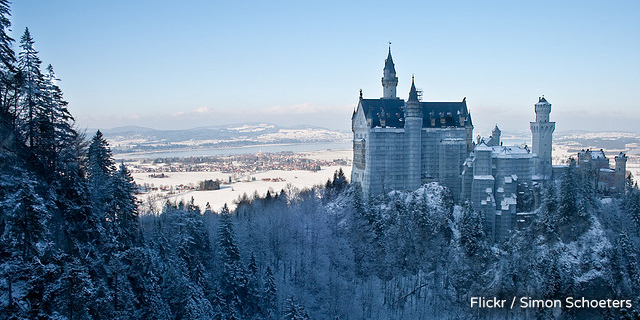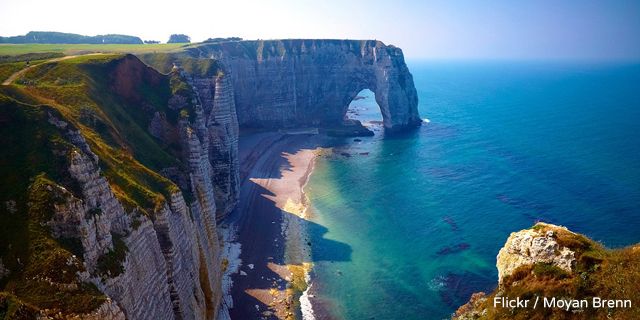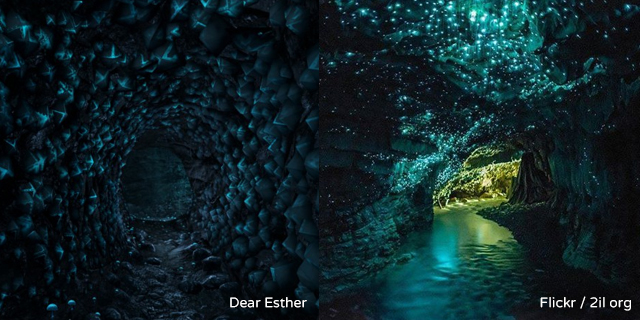Realism in games is a touchy subject. There’s a distinction between praising a game for being “so realistic” and a game verging into “too realistic” territory. Make a game that mimics real life and you won’t have a very fun game. It must be a fine, wobbly line that developers walk to ensure there’s a mix of suspension of disbelief, a rational plot and a physics engine that will allow us to appreciate, but not critique too harshly.
Currency, or rather acquisition of currency, shouldn’t be as much of a chore in games as it is in life. What drives our society shouldn’t necessarily be present in games. Sure, we enjoy a different political world, or different sociological issues that mimic the near future of our own, but it’s a fine line. That being said, I truly believe that artists, animators and level designers should welcome our little planet with open arms when it comes to constructing levels and use its landscapes as a source of inspiration when creating new worlds.
At the primary step, there must be an idea. Before coding is done, before promotional materials are created and agonized over and (ideally) before money, somebody has to have a core idea of what the game is going to be, what sort of makeup it’s going to have. It’s nearly impossible to have a game without levels, indeed, it’s difficult to picture a producer not thinking about the types of levels their players are going to traverse. Nearly every title has some form of “level,” and the most memorable games I’ve played always have memorable ones. But some games head in a different, more “realistic” direction. Their levels are influenced directly by real-life locations, and are more memorable for it.
Escapism is one thing, but there are just too many beautiful places on our planet to list, from the Sea Cliffs of Etretat, France (above) to the Aogashima Volcano in Japan. It’s not always a realistic option to travel to every place you want, so it’s a nice change of pace to see a game choose less magical and more grounded locations. The natural beauty is still there, the aesthetics and textures are still pleasing to the eye and, a bonus, they can connect with a player on a higher emotional level if they’ve actually visited a place like it, or have a great desire to do so. This was one of Dear Esther’s strengths.
What type of game Dear Esther is, if it’s even a game at all, is up for debate. It’s a first-person… exploring… artsy… experience? It doesn’t come close to following traditional game conventions, nor does it have any desire to do so. You explore an uninhabited island off the coast of Scotland, listening to letters from a woman named Esther. You’re not sure who you are, or who is narrating. The game is all about the feel, entirely style over substance but a large part of what makes it work is the island itself.
Many would feel right at home with the location: quiet waves lapping the shore, moss covered rock faces and paths that are not overridden with wild grass, but aren’t exactly tended to either. The mysterious appeal of the island is enhanced due to the fact that many players had the notion that they’d been to a place like this before, or could venture to if they so desired. Common houses, caves and cabins lead you to believe that you could escape to a world like this quite easily.
The icing on the cake comes when you discover a cave with a lot of stalactites and stalagmites. Accompanying these real-life rock formations are beautiful streams and breathtaking markings on the walls. I was immediately content, as the gorgeous orchestral background music encouraged me further but also conveyed that sense of mystery Dear Esther was so dedicated to presenting. It was also impossible for me not to think of the Glow Worm Cave, in New Zealand. Did this inspire the creators? Or is it a coincidence?
Either way, the game succeeded largely because of how serene and quiet the environments were, but also how familiar they felt. I’d like to see other games try this approach.
Even if your video game location isn’t something most people grew up around, that doesn’t mean you can’t take their designs into account. Take the Neuschwanstein Castle in Germany or Montana Magica Lodge in Huilo-Huilo, Chile. Both are examples of common levels in video games (castles and inns), yet look fantastical enough that nobody would bat an eye if they saw either building in a first person shooter, or role playing game. On the contrary, they would probably find the aesthetic pleasing, or recognizable. Either promotes a positive emotional response.
Grand Theft Auto IV did a magnificent job recreating a satirical example of New York. L.A. Noire’s team also excelled at creating an incredibly detailed version of Los Angeles set in the late ’40s, including the house, car and street models. I can almost always notice and appreciate effort, and the research shown jumps out from the screen.
The most recent personal example regarding this topic would have to be Alan Wake. The game wasn’t perfect in my mind, but Remedy Entertainment absolutely nailed the Pacific Northwest location it was obviously going for. I’ve lived in Victoria, British Columbia nearly my whole life and have visited nearby locations often, such as Vancouver, Seattle and areas of Oregon. Alan Wake couldn’t have done a better job. The trees, the lakes, the fog, the mountains; every area looks amazing, like the team took a year-long vacation and digitized all the photos. Magnificent.
Remedy even took obvious inspiration from Oregon’s Crater Lake to create Alan’s home on Cauldron Lake. Not only is it a compelling location in real life, it’s something you don’t often see in games. Now imagine you see this area, for the first time, in the game. Perhaps you’ll be motivated to go see Oregon in real life? The connection will be that much stronger when you see it in person, then again when you replay the game after enjoying the scenery with your own two eyes. It’s beneficial no matter how you spin it. I didn’t even mention Alan Wake’s lodge, power plant, lighthouse, café or ranger station, all of which have real-life counterparts.
A developer doesn’t always have the luxury of having the budget to accurately re-create these types of areas; limitations often force environments to be small, cramped, bland or “cookie-cutter.” It’s nice to see more modern games, such as Grand Theft Auto V, Fragile Dreams and The Last of Us have a clear commitment to these types of environments. The games, players and experiences are all richer for it.























